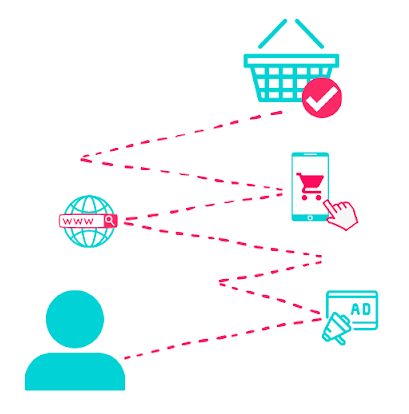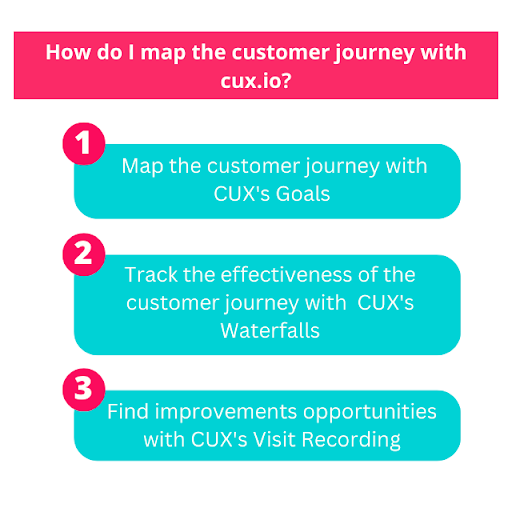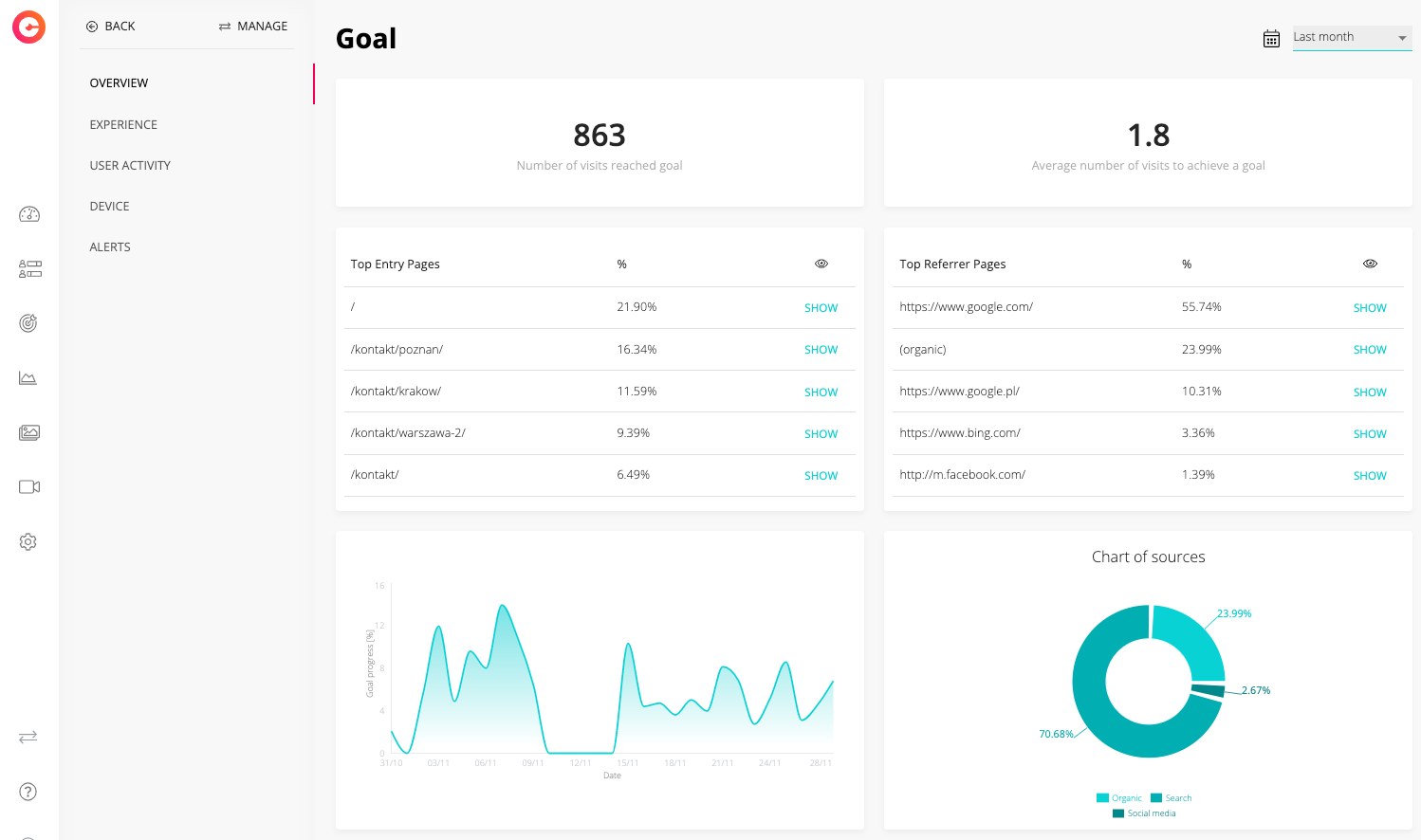Don’t worry, we are not here to judge, but to help you get started with actually understanding your customers, how they convert, and what you can do to make that process even smoother.
Let’s have a look at what a customer journey map is, and check out some useful tips on how to draw it up, read it, and understand the insights it provides.

What is customer journey mapping?
Customer journey mapping is the process of creating a path of interaction between your customers and your brand.
In a traditional sense, a customer journey could span from the customer seeing the advertisement on a billboard or on the TV, visiting the store, searching through the shelves and talking to a sales assistant, to ending with a purchase.
Although these types of customer journeys still exist, with the world fully entering the digital era, things changed quite a bit, and a new type of customer journey – a fully digital one – emerged.
What is a digital customer journey?
A customer journey is the path an individual follows, which ultimately leads them to purchasing your products or services. Customer journey mapping is an integral part of working with Customer Experience and customer data analytics.
In its essence, it does not differ that much from the traditional customer journey. However, it comes with a number of opportunities much more difficult to achieve in the physical world – such as being able to trace and track every step and behavior of your customers across the entire journey.
Benefits of digital customer journey mapping
The main benefit of mapping your customer journey comes in the form of a much clearer idea of who your customers are and how they behave during their buyers journey. Once you have mapped out your customers’ journey, you will be able to:
- predict your customers’ behavior,
- understand your customers’ biggest pain points,
- identify customer needs,
- avoid future roadblocks,
- continuously optimize the customer journey for increasingly better results.
What is a digital customer experience?
Customer Experience encompassess all interactions a customer has with your eCommerce across their customer journey, and the feelings those interactions evoke.
By applying customer experiences onto the customer journey, you create the customer experience.
Why is customer experience and customer journey mapping important?
More often than not, we think that we know what the customer journey map looks like. More or less. Turns out, it’s usually less.
The thing about developing well-optimized customer experience and customer journey maps is that you cannot just sit down and imagine what they look like. In order to ensure that your customers convert quickly and easily, you must know what steps they take before successfully converting.

And even once you finally map out the most representative customer journey for your website, you can also analyze its effectiveness and potential for improvement.
This is where digital customer journey and experience mapping tools come in.
Which customer experience and customer journey mapping tool should you choose?
Although there are many tools that satisfy the basic requirements for mapping the customer journey, there is only one that will get the job done pronto and top notch – cux.io. CUX is an UX and Analytics Automation tool that provides you with the most accurate and robust representation of your customers’ digital experience and journey on your website.
How to map your digital customer journey?
"Put yourself in your customer's shoes!"
You may have heard or read that phrase before when trying to learn how to understand your customers and map their journey. Did it work? Managed to get that shoe on? Probably not. And there is nothing wrong with that!
Trying to see your product or service from the customer's perspective is not always easy, and sometimes just plain impossible. Telling someone to create a customer journey based on a "feel" is like telling them to go down a flight of stairs blindfolded – it will surely end up a disaster.
Another common piece of advice given to folks trying to create a customer journey map that's accurate is to gather direct feedback from the customers. Now, this is much better than just imagining things, but poses another danger – unreliability due to bias.
There are many tricks and tweaks that can help you tune up the quality of your customer journey maps, however, there is only one thing you need to be sure that every customer journey you map is top-notch – a quality analytical tool.
Creating a customer journey map with CUX
Using a robust UX Analysis and Automation software, such as cux.io, can be of considerable help if you wish to create a customer journey map (as you should, to ensure a prosperous future state of your business).
This is how you can map the customer journey in 3 simple steps with CUX’s help.

Step 1. Map the customer journey using the Goals
The first step to mapping an accurate customer journey is understanding how your customers convert. Customers will convert differently based on what they buy; there is not one uniform conversion path for all products and services in the world.
However, there is an easy fix to understanding exactly how YOUR customers convert, and that is achieved by observing the paths they take to purchase your product, subscribe to your newsletter, or register on your website.
CUX’s Goals analyze the visits that ended with the user converting, no matter what path they took, uncovering all customer touchpoints playing an essential part in your business' sales.
By looking at how the converting users progress through your website, you will see clear as day the paths they take – this allows you to build accurate and real customer journey maps.

Step 2. Track the effectiveness of the customer journey with the Waterfall
Once you know which touchpoints your customers interact with before converting, it's time to track the effectiveness of these touchpoints with the help of CUX’s Conversion Waterfalls.
Conversion Waterfalls mirror the steps your users take to convert, and measure how many users achieved a given step, before falling out of the funnel.
Tracking how many users begin the customer journey versus how many finish it is extremely crucial. You may have 500 people begin the journey, but only 10 of them will end up converting.
This means that people are interested in becoming your customers, but somewhere along the way the customer experience becomes impaired, preventing them from completing the purchase.

Step 3. Draw conclusions and find improvements opportunities in the customer journey mapping process
Once your customer's journey is mapped out with CUX’s Conversion Waterfalls and you know where the biggest conversion drops occur, you can start to dig into the pain points customers experience in those exact phases of their journey.
The easiest way to do that is by using CUX's Visit Recordings. This clever tool allows you to replay the visits where a conversion drop occurred.
After watching a number of those visits, you will be able to spot patterns and behaviors common for all customers who did not progress in their journey.

Best practices when mapping your customer journey
We hope you feel ready and willing to take on creating the customer journey map for your business! To make sure that you don't miss anything important, remember these best practices of customer journey mapping when you get down to the task at hand:
- set clear goals for your customer journey map,
- understand the journey and customer pain points with the help of reliable UX analysis software,
- create a different map for a different buyer persona,
- track every step your customers take in their journey,
- measure the effectiveness of the customer journey,
- adapt and optimize decisive touchpoints to streamline the purchasing journey.
Now it's time to roll up your sleeves and get the job done!
How to map Customer Experience with CUX
Once you have successfully mapped out the customer journey with CUX’s Conversion Waterfalls, it’s time to get down to the nitty-gritty: pain-points, quick wins, and optimization opportunities.
Conversion Waterfalls & Visit Recordings
With the Conversion Waterfalls showing you exactly where the biggest customer drops occur in the customer journey, you can zoom in on the culprits behind their frustrations. CUX’s Visit Recordings will help you with that.
When looking at your Conversion Waterfall, you can see a list of visit recordings alongside each stage of the funnel. By analyzing the progression of your customer’s visit, you gain an invaluable insight into the factors that affect their ability to enter the next stage of the customer journey.

By analyzing the replays of your customers’ visits, you will notice similarities and patterns in the visits that did not convert.
Some of the most common behavioral patterns you will notice include:
- Zooming – this happens on mobile devices, usually when text or images are too small for the user to view comfortably.
- Rage clicks and rage presses – they show where visitors get frustrated when interacting with your website.
- Chaotic movements – these occur when your customers are confused by your website.
- Refreshing – caused by page load errors and display issues.
These behaviors make up your customer experience map at each stage of the customer journey. Eliminating the causes of these behaviors will instantly improve the effectiveness of your funnel, which will result in perfecting the customer experience and allowing the customers to smoothly progress through their journey.
Test run
If you are still not sure if CUX is a customer journey mapping software for your business or eCommerce – take it on a test run and rid yourself of any doubts! You can request a demo or start a free trial of CUX with just one click, so click away!